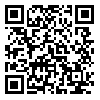
International Journal of Industrial Engineering & Production Research
Iran University of Science & Technology
Sun, Apr 27, 2025
[Archive]
Volume 32, Issue 3 (IJIEPR 2021)
IJIEPR 2021, 32(3): 1-10 |
Back to browse issues page
Download citation:
BibTeX | RIS | EndNote | Medlars | ProCite | Reference Manager | RefWorks
Send citation to:



BibTeX | RIS | EndNote | Medlars | ProCite | Reference Manager | RefWorks
Send citation to:
RIZVI S A, Ali W. An artificial neural network approach to prediction of surface roughness and material removal rate in CNC turning of C40 steel. IJIEPR 2021; 32 (3) :1-10
URL: http://ijiepr.iust.ac.ir/article-1-1163-en.html
URL: http://ijiepr.iust.ac.ir/article-1-1163-en.html
1- University Polytechnic, Jamia Millia Islamia, New Delhi, INDIA , saritbhu@gmail.com
2- CCS University,Meerut
2- CCS University,Meerut
Abstract: (3003 Views)
The present study is focused to investigate the effect of the various machining input parameters such as cutting speed (vc), feed rate (f), depth of cut, and nose radius (r) on output i.e. surface roughness (Ra and Rq) and metal removal rate (MRR) of the C40 steel by application of an artificial neural network (ANN) method. ANN is a soft computing tool, widely used to predict, optimize the process parameters. In the ANN tool, with the help of MATLAB, the training of the neural networks has been done to gain the optimum solution. A model was established between the computer numerical control (CNC) turning parameters and experimentally obtained data using ANN and it was observed from the result that the predicted data and measured data are moderately closer, which reveals that the developed model can be successfully applied to predict the surface roughness and material removal rate (MRR) in the turning operation of a C40 steel bar and it was also observed that lower the value of surface roughness (Ra and Rq) is achieved at the cutting speed of 800 rpm with a feed rate of 0.1 mm/rev, a depth of cut of 2 mm and a nose radius of 0.4 mm.
Type of Study: Research |
Subject:
Systems Modeling and Simulation
Received: 2020/11/21 | Accepted: 2021/07/19 | Published: 2021/06/9
Received: 2020/11/21 | Accepted: 2021/07/19 | Published: 2021/06/9
Send email to the article author
| Rights and permissions | |
 | This work is licensed under a Creative Commons Attribution-NonCommercial 4.0 International License. |




